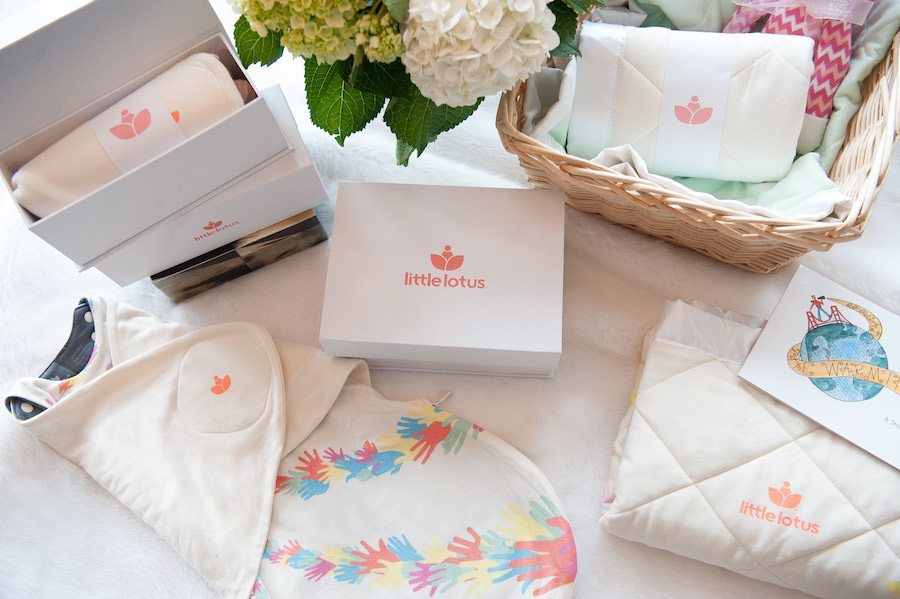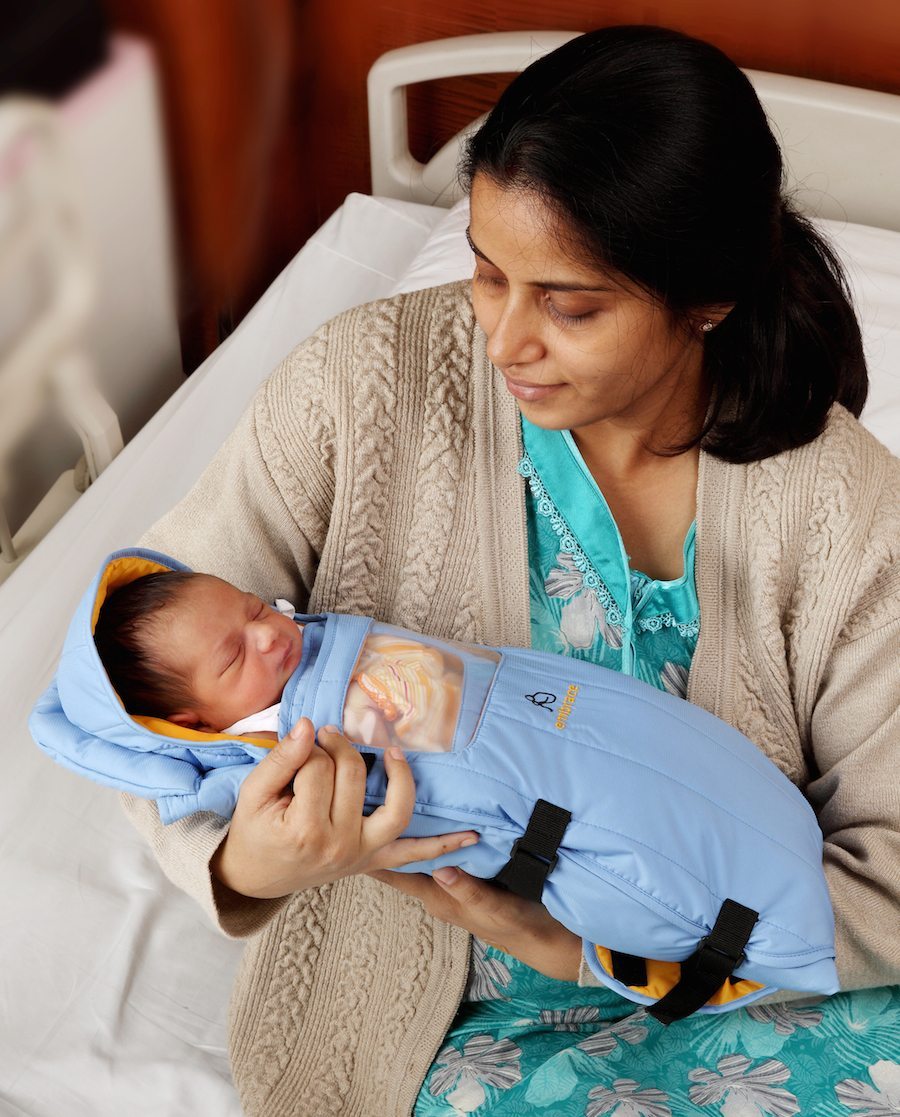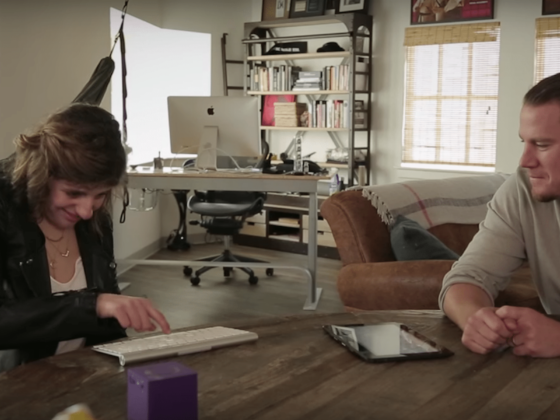With three degrees under her belt from Pomona College, Harvard and Stanford, calling Jane Chen an achiever is an understatement. Her incredible drive and work ethic, combined with her heart for social change and innovation resulted in her creation of the Embrace Infant Warmer.
After seeing a need for a more affordable and accessible way to save the lives of millions of premature babies without the use of an incubator, Jane sprung into action with her team of classmates from Stanford. Together under Jane’s leadership, they’ve built Embrace Innovations and Little Lotus to continue their mission to save these babies and families.
After watching her TED talk and reading her recent feature on The Wink, I was truly inspired and felt so fortunate to have been able to interview her about her experiences and insight as an innovator, entrepreneur, and woman in business.
Darling Magazine: With your background working in HIV/AIDS relief in central China, and now with your efforts to save premature babies with the Embrace Infant Warmer, your passion for social welfare is unmistakable. Where did that start?
Jane: In terms of my own journey, my turning point was in 2002, a few years after I graduated from college. I read an article in The New York Times that changed my life. The article was about the AIDS epidemic in China. In the 1980s, millions of farmers contracted HIV through selling their blood. This was a huge campaign in which everyone’s blood was collected, farmers were paid $5 per bag, and after everyone’s blood was collected it was pooled together. The plasma was separated and the remaining red blood cells were re-injected into people’s bodies with the belief was that people could regenerate blood more quickly. In many of the villages, 60-80 percent of the adult population became HIV positive.
When I read this I was so horrified and shocked. These were poor farmers who were just trying to make an extra buck for their families from the government whom they trusted so much. As a result, they contracted a fatal disease and did not have access to even the basic medication. Millions of orphans were left behind as a result. It wiped out an entire generation of people. My heart went out to these people and a light bulb turned on in my head. I realized we are among the luckiest people in this world. I could have just as easily been born into a different life and suffered this horrible fate as a result.
… with a small, dedicated, and passionate team we were able to affect change in a really big way.
I decided I wanted to use the opportunity and skills I had been given to do something about the situation. I quit my consulting job. I worked with a startup NGO that was doing work in these areas by sponsoring the education of all the orphans who had been left behind — most of whom did not have HIV. In about two years we were able to help about 3000 children, but the greater impact of our work was that the government began providing education to all of the orphans in the affected areas and free AIDS medication to all the HIV medication.
It showed me that with a small, dedicated, and passionate team we were able to affect change in a really big way. It set the course of my life because I realized I was really passionate about doing this work and I loved making social impact. It became a personal goal of mine to try to bridge the healthcare disparity that I saw between developed and developing countries. When I started Embrace, that was one of the impetuses. It came out of a design class at Stanford called, Design for Extreme Affordability. We came together to design affordable technology. The challenge posed to my team was to build a baby incubator that cost less than 1% of the cost of a traditional incubator, which is $20,000. From that challenge, Embrace was born. I was lucky to work with an incredible group of graduate students in that class who would become my co-founders.
DM: I love the idea of the 1:1 model between Little Lotus and Embrace and the message behind it of connecting mothers around the world. Can you explain how the model works and how the Embrace warmers are distributed?
Jane: After four years of living in India working on the development of Embrace, I moved back to San Francisco. At that time, many of my friends were starting their families and having babies and I noticed that they were constantly worried about their babies’ temperature. Realizing that this was a concern for all parents, not just those with premature babies, inspired Little Lotus. I realized the same technology we had developed for Embrace could be used in simple swaddles and sleeping bags, that would help parents and babies here in the US. By launching Little Lotus with a Tom’s shoe–inspired 1:1 business model, we could continue launch a consumer product here that would help continue the impact of Embrace. So with the help of a great team of designers, Little Lotus launched last December with swaddles, sleeping bags, and blankets that help keep babies at the perfect temperature so they can sleep better.

Our goal over the next couple of years is to help a million babies with the Embrace Infant Warmer. The sales of the Little Lotus products are an important part of us reaching that goal, with our 1:1 model. With each purchase of the Little Lotus products, a baby will be helped by the Embrace Infant Warmer. In just the first four months since Little Lotus products have been available in the US, we have generated enough sales to help an additional 1,000 babies so far. Now over 200,000 babies have already been helped around the world with the Embrace Infant Warmer.
DM: Apart from funding, what is an unexpected challenge that you have faced as the CEO of Embrace Innovations?
Jane: In the early days I was mostly managing a group of male engineers. In India, where I was based for years, it happens to be very male dominated. I chose not to focus on the things that made me different. I was decisive and assertive with the team, but in a way that was authentic to me. I think that was the most important thing. Often times you have this image of what a leader should be and you force yourself to fit into that. I think women, in particular, have an inclination to do this. But what I found is that when you lead in a way that is most authentic to yourself, people get it and that really allows you to build trust.
… when you lead in a way that is most authentic to yourself, people get it and that really allows you to build trust.
As a woman, you often feel like a caretaker for people on your team. You are worried about everyone’s well being. People value that. When they join you as a startup, people are really placing their faith in you because it is such a tumultuous path and no one knows how things are going to turn out. When people know that you have their best interests at heart they will actually do the things that are best for the company.
DM: I was so inspired watching your TED talk and reading your feature on The Wink, but who do you look to for inspiration? Who were your role models growing up and how did they change over time?
Jane: I am often asked if there is a woman whom I admire. There is, and she’s not a Nobel laureate or global CEO. This woman is Sujatha, a mother from a village in south India. Sujatha lost all three of her babies, one after another.
When we showed Sujatha the Embrace Infant Warmer, she wept and said, “Maybe if I had this, I could have saved my baby.” Her grief was so deep, even seven years after she had lost her children. She then said, “The world is apathetic to the birth and death of a child. It is the mother who bears the emotional burden.”
And yet rather than being swallowed by this grief, Sujatha didn’t give up her hope of becoming a mother. Instead, she adopted a baby girl. What’s more, Sujatha uses her own experiences to educate and help other women in her village to help prevent these deaths from happening in the future. The last time I saw her, I told Sujatha that her strength gives me the determination to continue to do my work.
Sujatha is shining example of a woman making a difference in the lives of other women, despite the tragedy she has experienced. My hope is that all of us can play a role in empowering and helping women less fortunate than ourselves. Because at a fundamental level, we all share the same courage, love and hope to make the world a better place for the next generation.

DM: What advice do you have for other young women who want to follow in your footsteps of pursuing innovation and social change?
Jane: My advice is to just do it. Don’t overthink the solution – just go out there and create something, experiment and prototype. Then refine your solution along the way — but take that first step, which is the most difficult. Measure yourself not necessarily by the outcomes at first, but by how quickly you’re learning along the way so you can ultimately create the best solution.
And in the process of all of this, really understand your customers and develop empathy for their needs. I believe this is at the root of any great innovation. I’d also advise that it’s important to innovate not only on new products, but on the business models that can support them.
Also, I think it’s really important to be rooted in your purpose. It’s so easy to get distracted as you’re trying something new. Make sure you stay true to why you are solving this problem in the first place and how it aligns with your values. Because when you truly believe in something, as Paulo Coehlo says, “the entire universe will conspire in helping you to achieve it.”
Images provided by Little Lotus












2 comments
Thank you, thank you, thank you for this enlightening and inspiring article. I am sharing this with everyone I know as it speaks to the art of innovation and following your purpose as well as being the source for social change.
This is such a wonderful interview. I love Jane’s mission and her commitment. It’s super inspiring 🙂
http://www.thebusinessofblooming.com